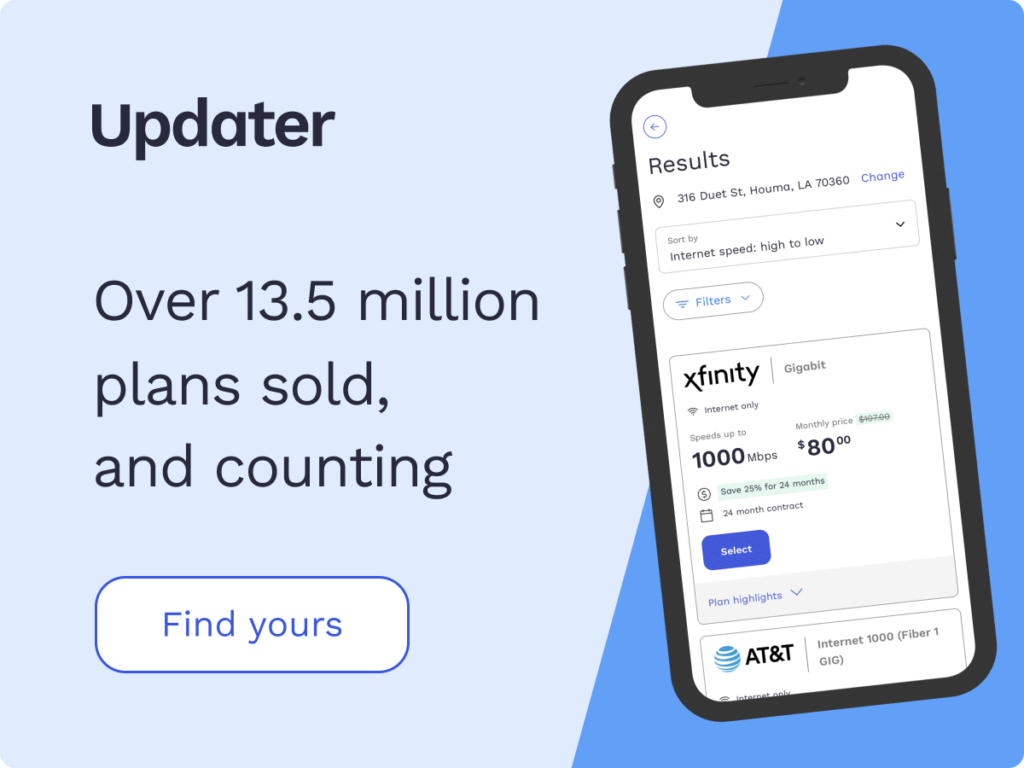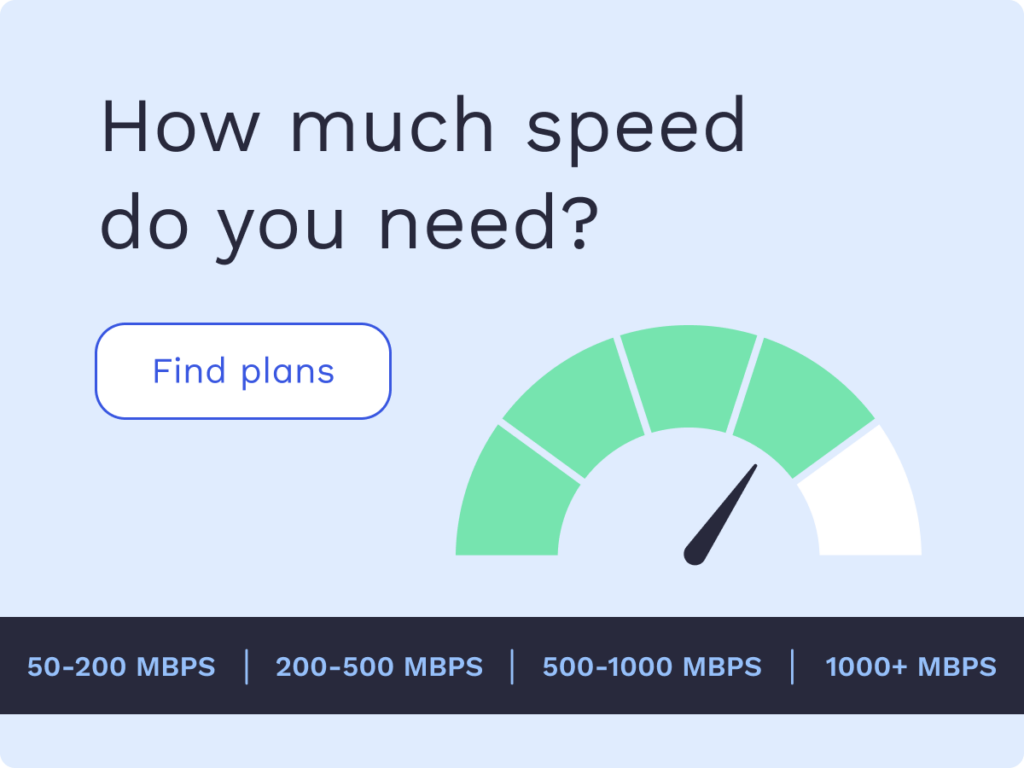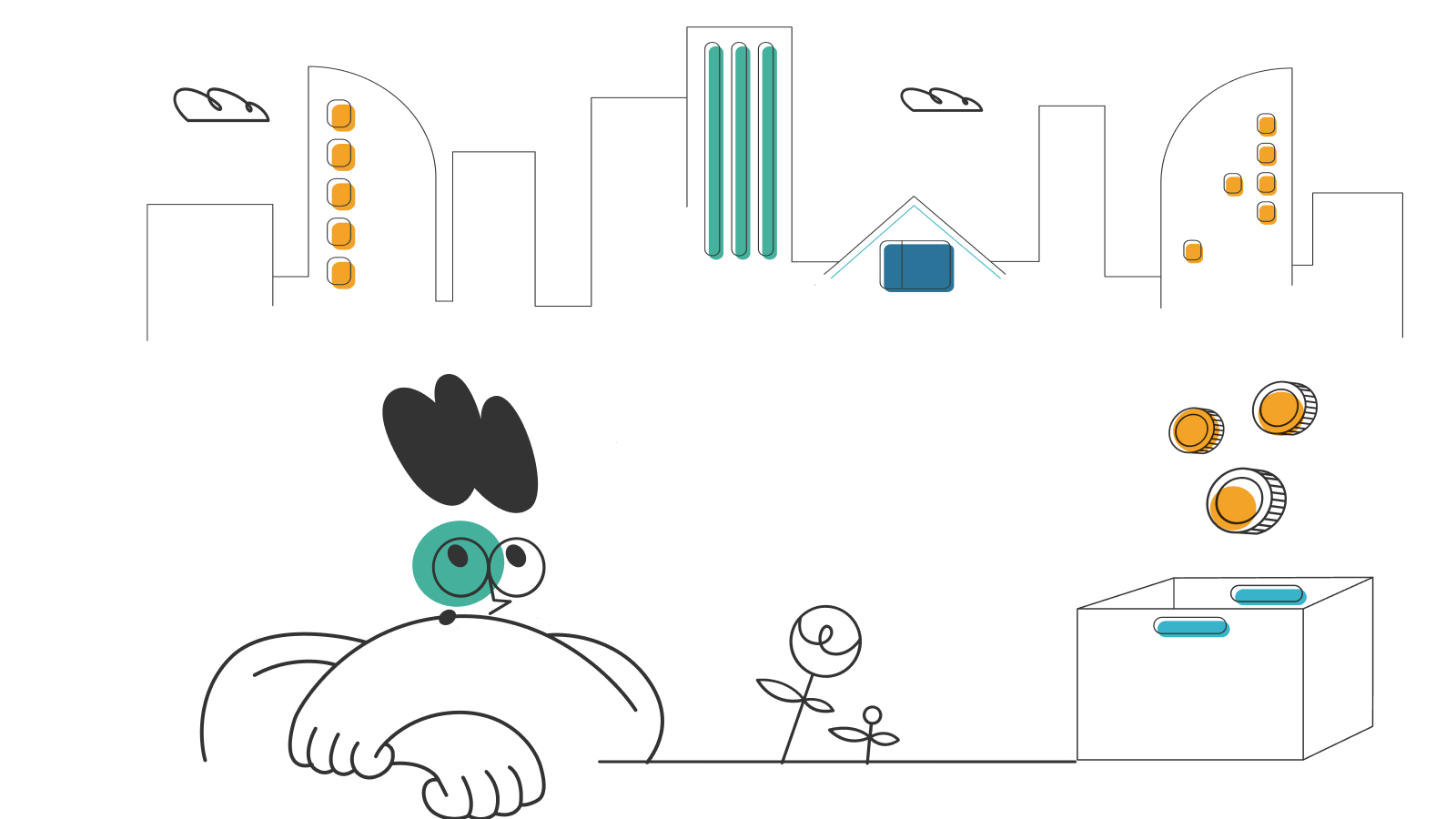Bandwidth vs Latency: How Are They Different?

When assessing your internet service, it’s important to take latency and bandwidth into account because they provide objective measures of what you’re getting from an internet service provider (ISP).
Because both latency and bandwidth are factors in internet performance, it can be easy to confuse the two—or presume they always work together. In reality, latency and bandwidth both help decide how smooth your internet experience is, but in two different ways: Bandwidth measures the amount of data your system can manage, while latency measures the speed at which you get data.
We’ve compiled a detailed breakdown of bandwidth, latency, and how they compare to help you understand these two critical concepts.
- What is bandwidth?
- What is latency?
- Comparing bandwidth and latency
- Frequently asked questions (FAQs)
What is bandwidth?
Bandwidth refers to the amount of data you can receive each second. Modern home internet is typically measured in gigabits per second (Gbps), megabits per second (Mbps), or for slower connection types, kilobits per second (Kbps). It’s important to remember that the unit of measurement for bandwidth includes bits, not bytes, which represent different amounts of data. The unit of measurement for megabytes per second, for example, is MBps, with a capital “B,” and this is often used to refer to the speed at which a file gets downloaded or uploaded.
An easy way to visualize bandwidth is to think of a freeway with multiple lanes. Some freeways have ten or more lanes and can handle a vast amount of cars, while others have just a few, perhaps two or three, and can only manage a relatively small amount of traffic. An internet connection with a lot of bandwidth is like a freeway with many lanes, and the cars are like the data flowing from the internet to your home and back again.
The more bandwidth you have, the more data your connection can handle at any given time. For example, if one freeway has 12 lanes and another has three, the 12-lane one can handle four times as many cars at any given moment. It’s similar with your internet bandwidth. If you have 12Mbps of bandwidth for downloads and a friend has 3Mbps, your connection can download four times the amount of data at any given time.
Similarly, if you have 1000Mbps of bandwidth, your connection can handle ten times that of a 100Mbps connection at any given time. This is an important consideration when choosing your internet plan, particularly if you have users in your home who need access to data-heavy content.
Why is it better to have more bandwidth?
The higher the bandwidth, the more data your internet connection can manage at any given time. This is especially important when it has to handle multiple streams of data simultaneously.
For example, imagine you have a family of four, with two parents, a 13-year-old and a 17-year-old. After dinner, there are three different kinds of online activity happening:
- The parents hit the couch to check out an episode of The Mandalorian.
- The 13-year-old decides to watch an episode of WandaVision.
- The 17-year-old starts working on homework that involves downloading high-definition video and piecing it together.
If this family has an internet connection with around 5Mbps of bandwidth, at least one of these activities may not go as smoothly as they’d like. While 5Mbps may be enough to stream content in HD, that activity alone could consume all the available bandwidth of the family’s service.
The parents and 13-year-old may experience buffering, which is when the show pauses to allow more of the content to download. The 17-year-old may have to deal with slow downloads that fluctuate in speed, going faster when the other devices are downloading less data—perhaps right after buffering—and slower when they’re pulling in more.
On the other hand, if the family had a connection that allowed for 100Mbps, they may not have any noticeable problems at all because this is more than enough to stream two HD videos at the same time while also downloading data-heavy content. However, to predict exactly how the experience will pan out, you also have to take latency into consideration.
What is latency?
Latency refers to delays that force data to take longer to reach its destination. It’s caused by many factors, each playing a pivotal role in getting data from the internet to your computer or device. But to grasp latency, you need a basic understanding of how data moves through the internet.
Latency 101: How data moves through the internet
Your computer or device has a browser, which interprets data and makes it something you can see, hear, read, and understand. Common browsers include Chrome, Safari, and Firefox. When you’re checking out website content, the browser is where the experience begins.
For example, suppose you’re connected to Wi-Fi and want to watch a video on YouTube. You click on the play button, and a moment later, the video starts. Here’s what happens during that moment:
- After you click the play button, your browser sends a request through your computer’s Wi-Fi card to your Wi-Fi router.
- The router sends the request to your modem.
- The modem forwards the request to your ISP, but they could be many miles away.
- Your ISP then forwards the request to one of YouTube’s data centers, where the video is stored.
- YouTube’s server gets the request and starts sending the video’s data.
- The video’s data goes back to your ISP.
- Your ISP takes the data and sends it to your modem.
- Your modem sends the data to your router.
- Your router then transmits it to your computer’s Wi-Fi card.
- It then goes to your browser, where you can watch it.
This is an ultra-simplified version of what happens. There are other steps involved—all of which can result in latency. For example, your ISP will likely inspect the data to see if it contains threats. Similarly, your router may have a firewall that also examines the data before sending it through.
Also, there may be several locations the data has to travel through to go from your home to your ISP and from your ISP to YouTube’s data center. And, naturally, once it reaches the data center, it has to be inspected for threats by the cybersecurity tools there as well.
Each of these steps takes time, and this is what causes latency. Here is a basic list of some of the primary latency culprits:
- The distance between places where data has to move. Longer distances can cause increased latency.
- The type of internet connection you have. Fiber is faster than DSL, for example, because fiber transmits light waves through tiny tubes, while copper transmits electrical pulses. It takes longer for electricity to move through copper than it does for light waves to move through glass tubes.
- The amount of content you’re getting from a website. The more data the content has, the longer it will take to appear in your browser.
- The amount of bandwidth you get from your ISP. The more bandwidth you have, the more data you can get per second.
- The quality of your Wi-Fi signal. Wi-Fi can experience interruptions or get slower due to distance from the router or interference from other devices.
Can latency prevent data from downloading altogether?
In some cases, yes, too much latency can completely prevent a packet of data from getting to your computer. This is because of how data is sent through the internet and the protocols used to transport it. If a file is 5 gigabytes in size, it doesn’t get sent as one massive amount of data all at once. Instead, it’s divided up into smaller pieces called packets. These are then sent to their destination and pieced together to form the overall file.
But with typical internet protocols, which are rules that govern how data moves, data packets have a limited number of moves they can make before getting discarded. These are called hops. Latency is often due to the time it takes for data packets to complete all the hops needed to get to their destination. If a packet has to make too many hops, it can be discarded.
That’s one of the reasons why a website will seem to malfunction, but when you reload it, it works just fine. The reloading process restarted the chain of events that got the data from the site’s server to your browser.
Comparing bandwidth and latency
Bandwidth is the amount of data your connection can handle, whereas latency refers to delays that impact how quickly data gets to your devices. Even though they’re very different, they are related in one important way: If you have less bandwidth, you may have more latency. This is because if your internet connection can only transmit a certain amount of data per second, such as 5 megabits, files that are larger than that will take longer to get to your browser.
Here’s another way of looking at it: While bandwidth affects latency, latency doesn’t affect bandwidth. Returning to the freeway example, the width of the road itself is like your bandwidth, and the cars are like the data that has to travel from one point to another. If the police set up a checkpoint on the freeway, it doesn’t matter how many lanes it has. It’s going to take longer for the cars to reach their destination.
It’s the same with bandwidth and latency in your internet connection. No matter how many megabits your ISP allows you to download per second, if the data has to pause for a security inspection or take detours through multiple locations, you’re going to experience latency.
Frequently asked questions (FAQs)
What’s the difference between bandwidth and speed?
Bandwidth is how much data you can get each second, and speed is how quickly that data actually travels to and from your browser.
How does latency affect what you do on the internet?
If there’s too much latency, webpages may not work as you’d expect, video or audio may be distorted or slow, and games may freeze or act glitchy.
What can you do if you have too much latency?
You can stop any downloads, close apps you’re not using, use an Ethernet cable instead of Wi-Fi, or check your computer for malware.
What can you do to get more bandwidth?
You can ask your ISP to provide you with a different internet package with more bandwidth. This may require getting a different modem, depending on the type of connection and the bandwidth it provides.
*Pricing varies by location and availability. Speeds may vary. All prices subject to change; for current pricing and availability visit our internet service page. Prices as of 5/6/22.
Disclosure | Updater articles are based on our own data and research, independent from partner relationships. We are not compensated by partners for information and opinions presented here. Our Editorial Terms of Service can be found here.














